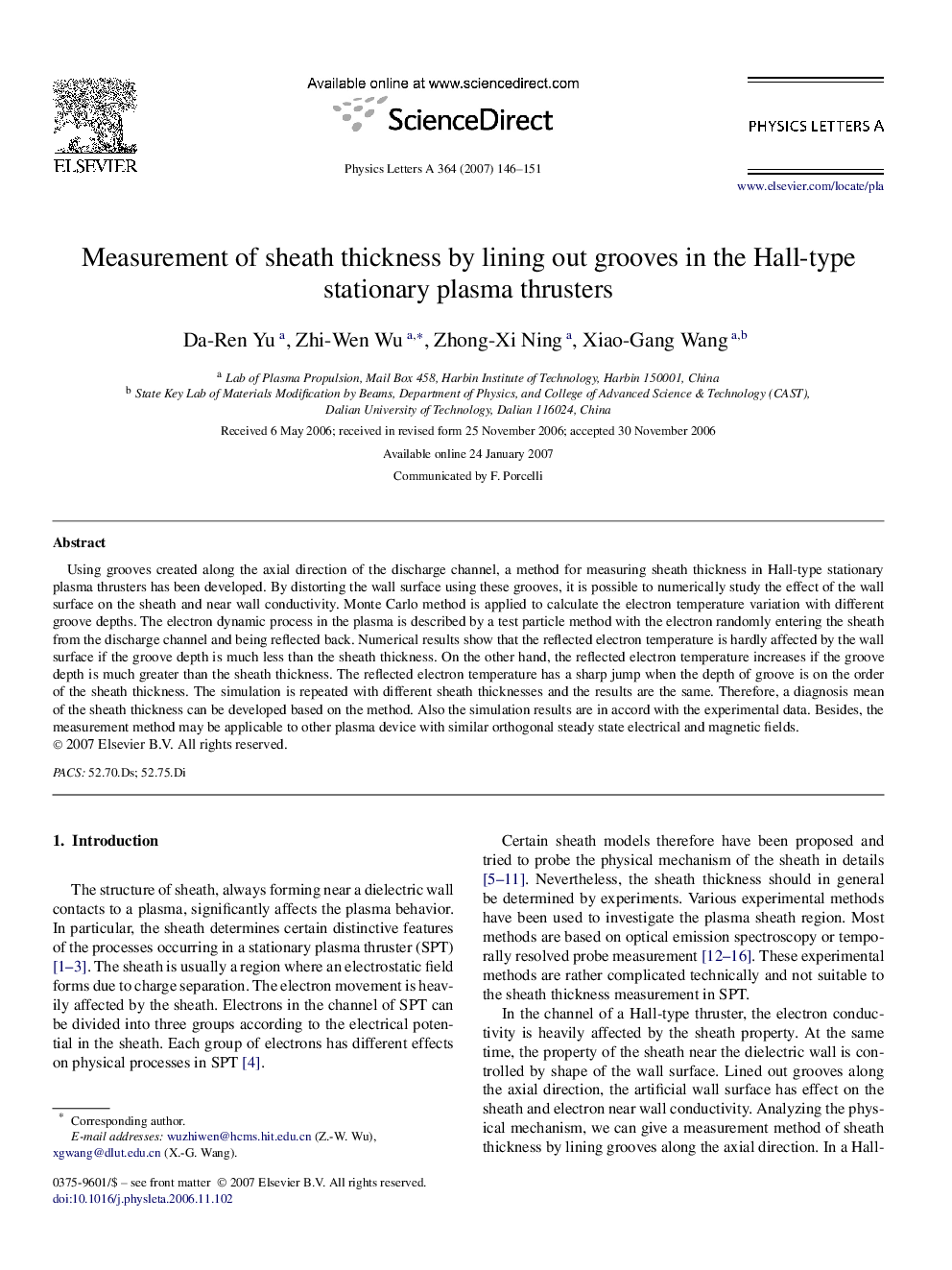| Article ID | Journal | Published Year | Pages | File Type |
|---|---|---|---|---|
| 1863780 | Physics Letters A | 2007 | 6 Pages |
Using grooves created along the axial direction of the discharge channel, a method for measuring sheath thickness in Hall-type stationary plasma thrusters has been developed. By distorting the wall surface using these grooves, it is possible to numerically study the effect of the wall surface on the sheath and near wall conductivity. Monte Carlo method is applied to calculate the electron temperature variation with different groove depths. The electron dynamic process in the plasma is described by a test particle method with the electron randomly entering the sheath from the discharge channel and being reflected back. Numerical results show that the reflected electron temperature is hardly affected by the wall surface if the groove depth is much less than the sheath thickness. On the other hand, the reflected electron temperature increases if the groove depth is much greater than the sheath thickness. The reflected electron temperature has a sharp jump when the depth of groove is on the order of the sheath thickness. The simulation is repeated with different sheath thicknesses and the results are the same. Therefore, a diagnosis mean of the sheath thickness can be developed based on the method. Also the simulation results are in accord with the experimental data. Besides, the measurement method may be applicable to other plasma device with similar orthogonal steady state electrical and magnetic fields.
